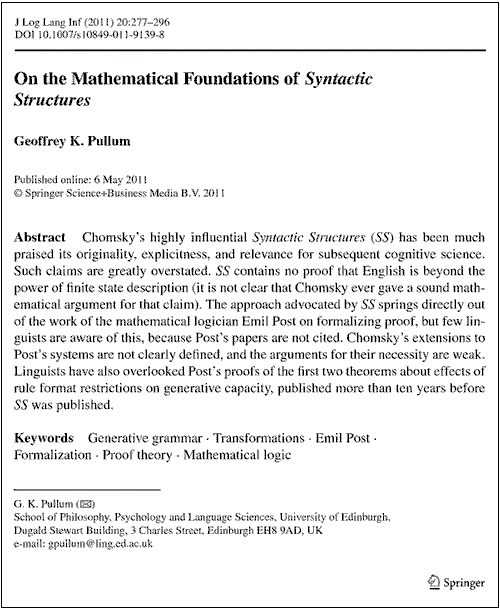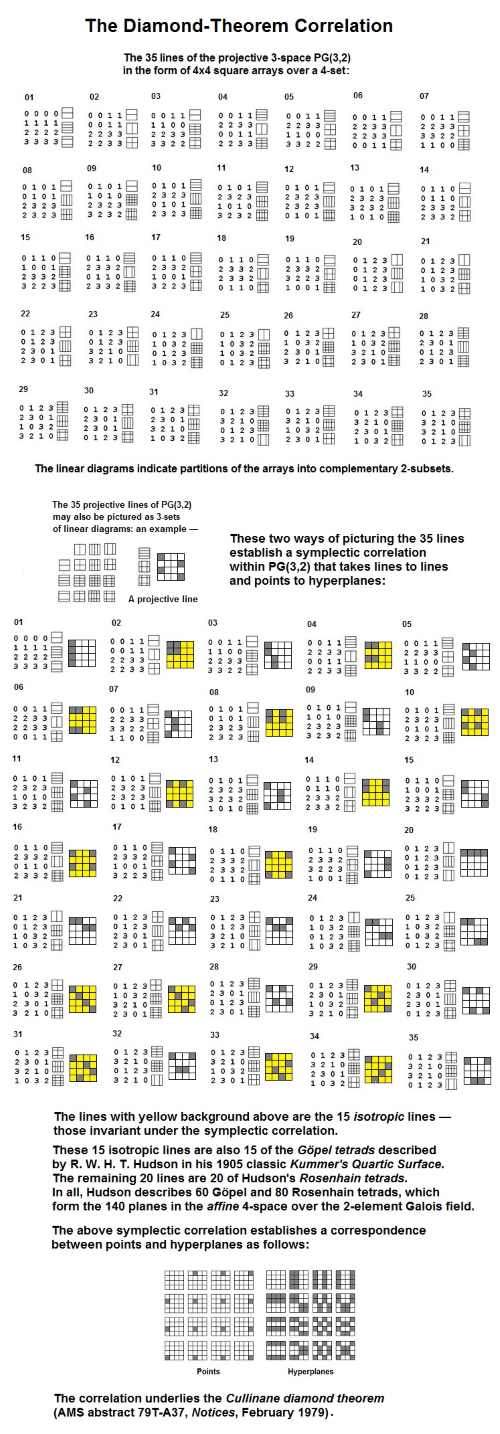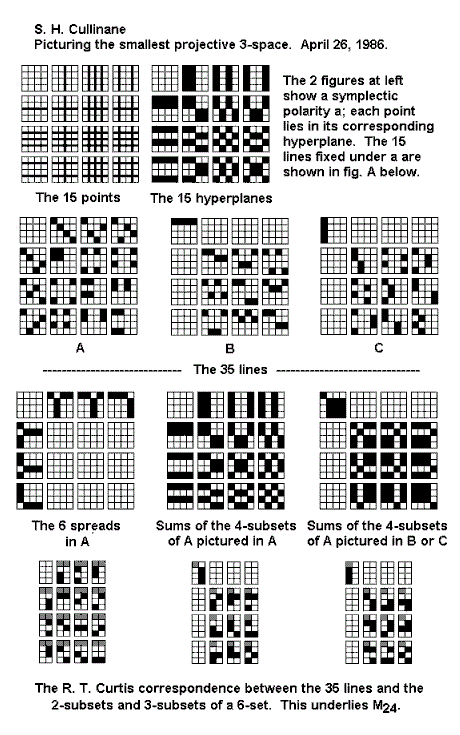In the Miracle Octad Generator (MOG):
The above details from a one-page note of April 26, 1986, refer to the
Miracle Octad Generator of R. T. Curtis, as it was published in 1976:
From R. T. Curtis (1976). A new combinatorial approach to M24,
Mathematical Proceedings of the Cambridge Philosophical Society ,
79, pp 25-42. doi:10.1017/S0305004100052075.
The 1986 note assumed that the reader would be able to supply, from the
MOG itself, the missing top row of each heavy brick.
Note that the interchange of the two squares in the top row of each
heavy brick induces the diamond-theorem correlation.
Note also that the 20 pictured 3-subsets of a 6-set in the 1986 note
occur as paired complements in two pictures, each showing 10 of the
3-subsets.
This pair of pictures corresponds to the 20 Rosenhain tetrads among
the 35 lines of PG(3,2), while the picture showing the 2-subsets
corresponds to the 15 Göpel tetrads among the 35 lines.
See Rosenhain and Göpel tetrads in PG(3,2). Some further background:




 .
.






















